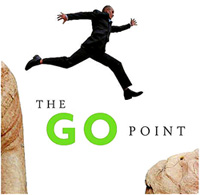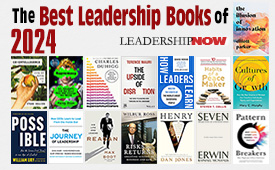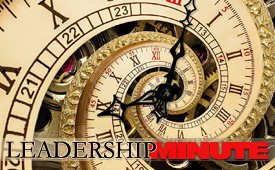 |
 |
12.20.06

The Go PointMen make their own history, but they do not make it as they please; they do not make it under self-selected circumstances, but under circumstances existing already, given and transmitted from the past.  Yet, within those constraints, argues Michael Useem, we have the opportunity to make our own destiny. We all make decisions all the time. Some decisions are in consequential, but often we are called upon to make consequential decisions—those that affect other people. Some people are very good at consistently reaching good decisions in a timely way. Yet, it is surprising how many people are just not great at knowing when to pull the trigger, and how to pull it when they do. The Go Point seeks to address that concern. By taking us into the moment when decisions were made, both good and bad, Useem digs out the principles that emerge from these experiences. From these examples, he constructs templates of fifty principles and tools we can bear in mind when faced with similar types of decisions. He advises us to identify the five or ten lessons that are most salient for the decisions that we most frequently face and then concentrate on just those.
Yet, within those constraints, argues Michael Useem, we have the opportunity to make our own destiny. We all make decisions all the time. Some decisions are in consequential, but often we are called upon to make consequential decisions—those that affect other people. Some people are very good at consistently reaching good decisions in a timely way. Yet, it is surprising how many people are just not great at knowing when to pull the trigger, and how to pull it when they do. The Go Point seeks to address that concern. By taking us into the moment when decisions were made, both good and bad, Useem digs out the principles that emerge from these experiences. From these examples, he constructs templates of fifty principles and tools we can bear in mind when faced with similar types of decisions. He advises us to identify the five or ten lessons that are most salient for the decisions that we most frequently face and then concentrate on just those.
The underlying point in this book is that decision making is a learned skill. You've got to make decisions and then look back on them and mine what lessons you can in order to improve your next decision. Whether it's a long term decision or a split second decision, there is a point when you have to force yourself to make it. That moment is the go point. He writes, “The go point is not always a matter of getting to yes….Rather, the go point is that instant when the choice gets made, whether no or yes, and the commitment moves from consideration to action. How you jump at that moment can make a vast difference, not only for yourself but also for all around you." Below is a template for looking at some of the most commonly encountered problems in reaching a decision.
Posted by Michael McKinney at 08:49 AM
|
BUILD YOUR KNOWLEDGE
 

How to Do Your Start-Up Right STRAIGHT TALK FOR START-UPS 
Grow Your Leadership Skills NEW AND UPCOMING LEADERSHIP BOOKS 
Leadership Minute BITE-SIZE CONCEPTS YOU CAN CHEW ON 
Classic Leadership Books BOOKS TO READ BEFORE YOU LEAD |